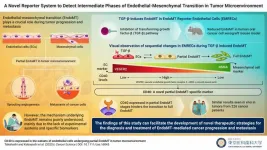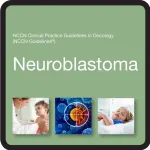(Press-News.org) Current immunotherapies work only against cancers of the blood and bone marrow
T cells engineered by Northwestern and UCSF were able to kill tumors derived from skin, lung and stomach in mice
Cell therapies can provide long-term immunity against cancer
CHICAGO --- Scientists at the UC San Francisco (UCSF) and Northwestern Medicine may have found a way around the limitations of engineered T cells by borrowing a few tricks from cancer itself.
By studying mutations in malignant T cells that cause lymphoma, they zeroed in on one that imparted exceptional potency to engineered T cells. Inserting a gene encoding this unique mutation into normal human T cells made them more than 100 times more potent at killing cancer cells without any signs of becoming toxic.
While current immunotherapies work only against cancers of the blood and bone marrow, the T cells engineered by Northwestern and UCSF were able to kill tumors derived from skin, lung and stomach in mice. The team has already begun working toward testing this new approach in people.
“We used nature’s roadmap to make better T cell therapies,” said Dr. Jaehyuk Choi, an associate professor of dermatology and of biochemistry and molecular genetics at Northwestern University Feinberg School of Medicine. “The superpower that makes cancer cells so strong can be transferred into T cell therapies to make them powerful enough to eliminate what were once incurable cancers.”
“Mutations underlying the resilience and adaptability of cancer cells can super-charge T cells to survive and thrive in the harsh conditions that tumors create,” said Kole Roybal, associate professor of microbiology and immunology at UCSF, center director for the Parker Institute for Cancer Immunotherapy Center at UCSF, and a member of the Gladstone Institute of Genomic Immunology.
The study will appear in Nature Feb. 7.
A solution hiding in plain sight
Creating effective immunotherapies has proven difficult against most cancers because the tumor creates an environment focused on sustaining itself, redirecting resources like oxygen and nutrients for its own benefit. Often, tumors hijack the body’s immune system, causing it to defend the cancer, instead of attacking it.
Not only does this impair the ability of regular T cells to target cancer cells, it undermines the effectiveness of the engineered T cells that are used in immunotherapies, which quickly tire against the tumor’s defenses.
“For cell-based treatments to work under these conditions,” Roybal said, “we need to give healthy T cells abilities that are beyond what they can naturally achieve.”
The Northwestern and UCSF teams screened 71 mutations found in patients with T cell lymphoma and identified which ones could enhance engineered T cell therapies in mouse tumor models. Eventually, they isolated one that proved both potent and non-toxic, subjecting it to a rigorous set of safety tests.
“Our discoveries empower T cells to kill multiple cancer types,” said Choi, a member of the Robert H. Lurie Comprehensive Cancer Center of Northwestern University. “This approach performs better than anything we’ve seen before.” Their discoveries can be incorporated into treatments for many types of cancer, the scientists said.
“T cells have the potential to offer cures to people who are heavily pretreated and have a poor prognosis,” Choi said. “Cell therapies are living drugs, because they live and grow inside the patient and can provide long-term immunity against cancer.”
In collaboration with the Parker Institute for Cancer Immunotherapy and Venrock, Roybal and Choi are building a new company, Moonlight Bio, to realize the potential of their groundbreaking approach. They are currently developing a cancer therapy that they hope to begin testing in people within the next few years.
“We see this as the starting point,” Roybal said. “There’s so much to learn from nature about how we can enhance these cells and tailor them to different types of diseases.”
The research was supported by the Parker Institute for Cancer Immunotherapy, NIH grants (grants F30 CA265107, T32 CA009560, 1DP2AI136599-01 and DP2 CA239143), Cancer Moonshot grant U54 CA244438, the Mark Foundation for Cancer Research, the Bakewell Foundation, and UCSF Helen Diller Family Comprehensive Cancer Center.
Roybal and Choi are inventors on patents related to these discoveries and are co-founders and equity holders in Moonlight Bio.
END
About The Study: In this study of more than 1 million patients with stroke, the Target: Stroke quality initiative was associated with improvement in thrombolysis frequency, timeliness, and outcomes for all racial and ethnic groups. However, disparities persisted, indicating a need for further interventions.
Authors: Gregg C. Fonarow, M.D., of the University of California, Los Angeles, is the corresponding author.
To access the embargoed study: Visit our For The Media website at this link ...
In a recent study of the brain’s waste drainage system, researchers from Washington University in St. Louis, collaborating with investigators at the National Institute of Neurological Disorders and Stroke (NINDS), a part of the National Institute of Health (NIH), discovered a direct connection between the brain and its tough protective covering, the dura mater. These links may allow waste fluid to leave the brain while also exposing the brain to immune cells and other signals coming from the dura. This challenges the conventional wisdom which has suggested that the brain is cut off from its ...
Chronic stress has far-reaching consequences for our bodies. For example, many stress-related psychiatric illnesses such as depression are associated with changes in the immune system. However, the underlying mechanisms of how these changes affect the brain are still largely unknown.
Enzyme from immune cells in the blood affects nerves in the brain
An international research team led by the University of Zurich (UZH), and the University Hospital of Psychiatry Zurich (PUK) and the Icahn School of Medicine at Mount Sinai, New York, has now uncovered a novel mechanism. “We were able to show that ...
Hidden beneath the heavily cratered surface of Mimas, one of Saturn's smallest moons, lies a secret: a global ocean of liquid water. This astonishing discovery, led by Dr. Valéry Lainey of the Observatoire de Paris-PSL and published in the journal Nature, reveals a "young" ocean formed just 5 to 15 million years ago, making Mimas a prime target for studying the origins of life in our Solar System.
“Mimas is a small moon, only about 400 kilometers in diameter, and its heavily cratered surface gave no hint of the hidden ocean beneath," says Dr Nick Cooper, ...
An international research group has discovered a new state of matter characterized by the existence of a quantum phenomenon called chiral current. These currents are generated on an atomic scale by a cooperative movement of electrons, unlike conventional magnetic materials whose properties originate from the quantum characteristic of an electron known as spin and their ordering in the crystal.
Chirality is a property of extreme importance in science, for example, it is fundamental also to understand DNA. ...
In a new study, Tokyo Medical and Dental University researchers shed light on partial endothelial-to-mesenchymal transition in the tumor microenvironment
Tokyo, Japan - Endothelial-mesenchymal transition (EndoMT, also termed as EndMT), a biological process resulting in the formation of mesenchymal (or lineage-committed) phenotypes from endothelial cells (lining blood vessels), plays a crucial role in tumor progression. Despite the important role of EndoMT, the underlying mechanism and characteristics of cells in intermediate/partial EndoMT remain largely unexplored. Now, researchers from Japan have developed a system to study these EndoMT stages.
In ...
COLUMBUS, Ohio – After serving decades in prison, Rwandans convicted of crimes of genocide returned to their communities articulating a “narrative of redemption,” saying they were good people, despite their past crimes.
And they were hopeful about their prospects for reintegrating into their communities.
Many of these former prisoners had been convicted of murder, often of their own neighbors, connected to the 1994 genocide in Rwanda. But they said they had changed – even while minimizing their role in the killings.
In ...
Fukuoka, Japan—Researchers at Kyushu University have found that Japan's current policy of stopping the sale of gas vehicles by 2035 and transitioning only to hybrids and electric vehicles may be insufficient to reduce the country's CO2 emissions and prevent it from reaching its decarbonization target goals. In fact, emissions may temporarily increase.
The team's analysis showed that along with the policy, the Japanese government must simultaneously work to increase production of clean ...
The European project entitled “Bone, Brain, Breast and Axillary Medical Microwave Imaging Twinning (3BAtwin)” has been awarded with €1.5M to reinforce our training on Medical Microwave Imaging (MMWI). The project is led by the Faculty of Sciences of the University of Lisbon (Ciências ULisboa) (Portugal), in collaboration with University of Galway (Ireland) and Turin Polytechnic University (Italy).
The goal of this twinning project is to accelerate the transition of Medical Microwave Imaging “from the research bench ...
PLYMOUTH MEETING, PA [February 7, 2024] — The National Comprehensive Cancer Network® (NCCN®)—an alliance of leading cancer centers—today published its first ever set of treatment recommendations pertaining to neuroblastoma. Neuroblastoma is a type of solid tumor cancer that typically occurs in early childhood, with the majority diagnosed before age five.[1] Neuroblastoma is the most common type of solid tumor (outside of brain tumors) in children, with more than 700 cases diagnosed in the United States every year.[2] Research innovations ...



